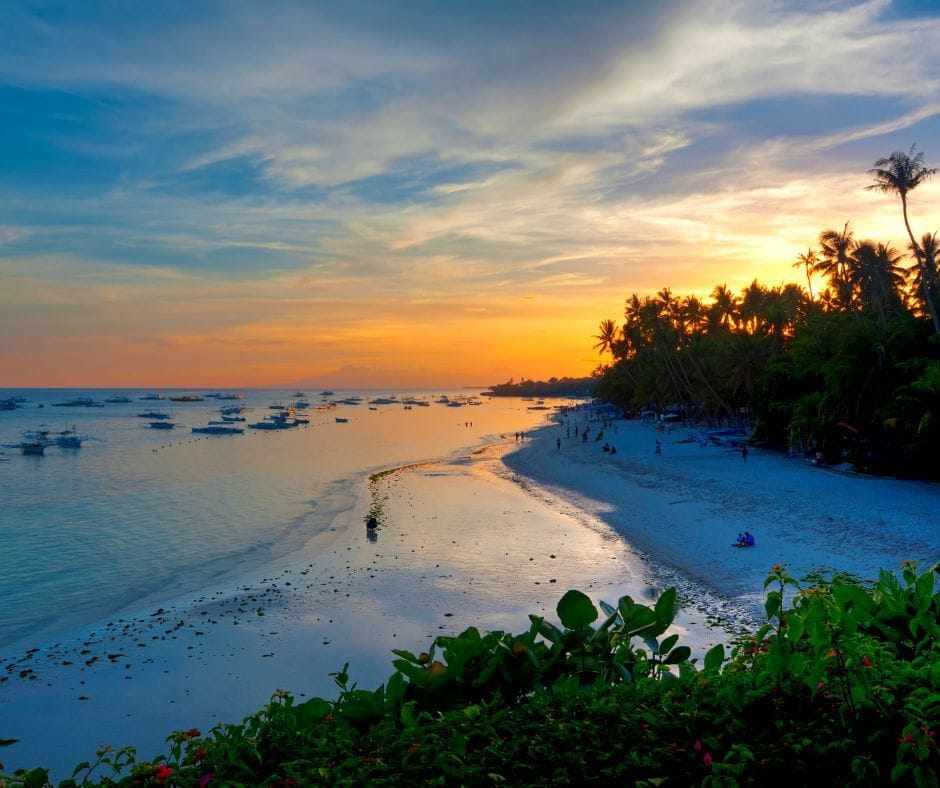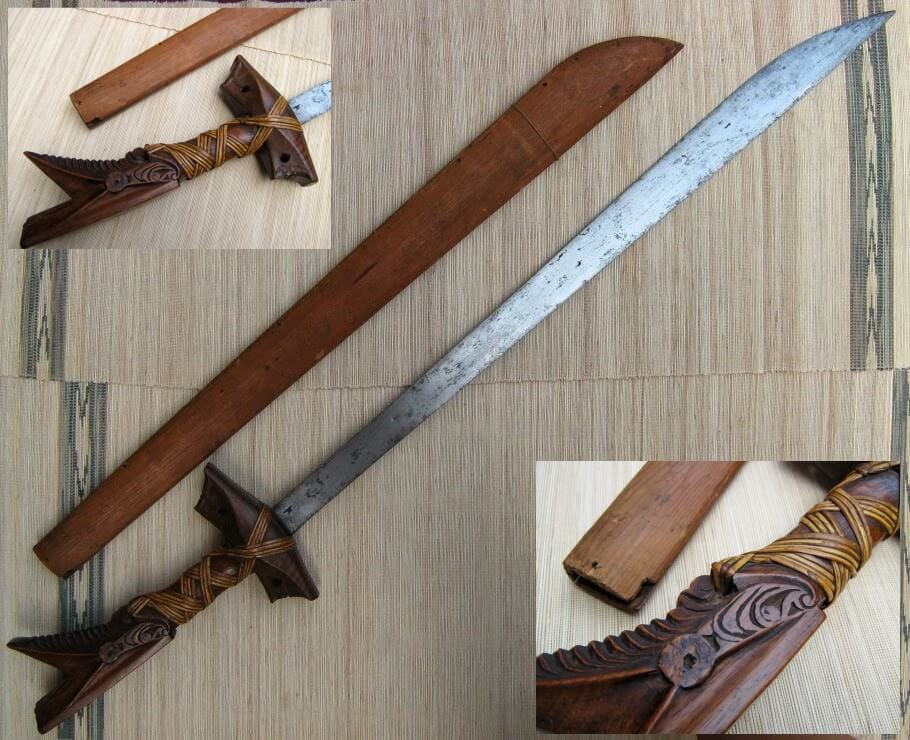- Finding Utopia Newsletter
- Posts
- Bohol Road Trip — Discover the Island’s Best at Your Own Pace
Bohol Road Trip — Discover the Island’s Best at Your Own Pace
Stories: Bohol Road Trip — Discover the Island’s Best at Your Own Pace; Pakikisama — The Filipino Value of Harmony and Togetherness; Philippine Swords & Blades — Forged in Fire, Woven Into Identity

Hello and Mabuhay!
Welcome to Finding Utopia — your trusted guide to exploring the wonders of the Philippines and beyond.
In this edition, we bring you inspiring stories and essential travel insights to fuel your next adventure:
Bohol Road Trip — Discover the Island’s Best at Your Own Pace
Pakikisama — The Filipino Value of Harmony and Togetherness
Philippine Swords & Blades — Forged in Fire, Woven Into Identity
Wherever you're dreaming of going next, we're here to guide you closer to your utopia.
Enjoy the read!
— The Finding Utopia Team
Bohol Road Trip — Discover the Island’s Best at Your Own Pace

Forget trying to cram every “must-see” into one day. Bohol calls for a slower rhythm—a road trip that lets you linger, wander, and uncover hidden corners beyond the tour buses. Here’s how to make the most of your Bohol journey when you go off the beaten path.
Planning Your Bohol Road Trip
Ideal Duration: 3 to 5 Days
To feel Bohol’s pulse—its coastlines, hills, forests, and heritage—you’ll want several nights. Trying to do too much in one day often means skimming the surface without depth.Getting There
Fly into Panglao International Airport, then bridge across to Bohol’s main island. Or take a scenic ferry from Cebu City to Tagbilaran. Both routes connect you to the heart of the island.Transportation Choices
For flexibility and surprise stops, rent a car, motorbike, or hire a private van. Tours and guides help—but having your own wheels allows you to pause at roadside waterfalls, hidden coves, or local eateries without pressure.Best Season
The dry months (November to May) bring clearer skies, more reliable roads, and dramatic contrasts—like the Chocolate Hills turning brown during the dry season.Packing Essentials
Don’t forget: offline maps (signal gets weak inland), reef-safe sunscreen and insect repellent, cash for small towns, a reusable water bottle, snacks, and your driver’s license.
Highlights of the Road Trip
Day 1: Panglao Beaches & Caves
Start your journey by easing into island life—Alona Beach’s soft sands, snorkeling, and dive tours. Nearby is Hinagdanan Cave, a magical swimming cavern lit by natural skylights. Also make time for Dauis Church, where fresh spring water flows beneath the altar, a local heritage gem.Day 2: Culture & River Rhythms
Depart Tagbilaran toward Loboc River Cruise—a floating restaurant journey through jungle-rimmed river banks while you feast and listen to live music. En route, stop at the Blood Compact Shrine, which memorializes one of the country’s earliest peace pacts. Also visit Baclayon Church, one of the oldest stone churches in the Philippines.Day 3: Chocolate Hills & Tarsiers
Head inland to Carmen to see the iconic Chocolate Hills View Deck—more than 1,200 conical mounds that shift color with the seasons. Near there is the Tarsier Sanctuary (Corella or Loboc), where you can quietly see these tiny primates in shaded forest. For more adventure, try ATV rides or jeep trails across hills and terraces.Day 4: Coastal Escape in Anda / Jagna
Venture off the map into Anda, Bohol’s quieter side. Swim at hidden pools like Cabagnow Cave Pool, explore coastal caves, or paddle to Lamanok Island, rich in early folklore and archaeological sites. A side trip to Jagna gives you heritage churches and local sweets like calamay to taste.
Why Travel Bohol by Road
When you drive Bohol, you don’t just pass through—you engage with its layers: rainforest, rivers, towns, traditions. You might linger at a mountain viewpoint, stop at a roadside snack stand, or discover a cave far from the usual route. It’s not about checking boxes but letting the island’s rhythm guide you.
Whether you’re chasing waterfalls, meeting locals, watching tarsiers blink, or tasting coconut ice cream at a farm, Bohol gives space for surprise. Take your time—and let the road unfold the island at your pace.
Fact-based news without bias awaits. Make 1440 your choice today.
Overwhelmed by biased news? Cut through the clutter and get straight facts with your daily 1440 digest. From politics to sports, join millions who start their day informed.
Pakikisama — The Filipino Value of Harmony and Togetherness

At the heart of Filipino society lies a quiet strength—the ability to coexist, to yield just enough, to preserve peace. This spirit is called pakikisama, often translated as “getting along with others,” but the true meaning runs deeper: a cultivated value of respect, empathy, and social harmony. In your recent blog post, Pakikisama, you explore how this value operates across families, workspaces, communities, and even in global Filipino circles.
What Pakikisama Really Means
Harmony Over Confrontation
More than mere friendliness, pakikisama emphasizes cooperation over conflict, understanding over argument, and group harmony over individual pride. It encourages smoothing over tensions with tact rather than fueling division.Empathy, Respect & Sensitivity
A core principle is pakikiramdam—the Filipino ability to sense others’ moods and adjust accordingly. It teaches when to speak, when to stay silent, and how to blend in without losing oneself.Putting the Group First
In many settings—family, community, work—pakikisama often means prioritizing the desired flow of relationships over personal preferences. It’s about sacrifice, humility, and compromise for community cohesion.
Historical Roots & Interconnected Values
Origins in Communal Life
In pre-colonial barangays, survival depended on cooperation—farming, fishing, protection—all required harmony. From these roots grew the expectation that people live with each other peacefully.
Over centuries, Spanish and American rule layered new social norms—courtesy, respect for authority, social decorum—that further shaped pakikisama into a more codified cultural behavior.
Pakikisama in Everyday Life
At Home & in Community
From softening disagreements among siblings to adjusting decisions so neighbors feel included, pakikisama shows up in small acts of deference and kindness. Community events, barangay projects, fiestas—they all thrive on it.In the Workplace
Teamwork, loyalty, and maintaining good relations are often just as important as efficiency and skills. Filipinos typically value positive social dynamics and may avoid blunt confrontation in favor of consensus.
Walking the Line: Challenges & Meaningful Practice
When Harmony Becomes Silence
A risk of pakikisama is avoiding necessary conflict—issues may go unspoken to preserve peace, sometimes at the cost of openness or truth.Balancing Authenticity with Unity
The most meaningful pakikisama is when people can be genuine yet considerate—holding values, yet respecting others. It’s a balance between self and group.
Pakikisama is more than a cultural remnant—it’s a living philosophy of connection and coexistence. In a world growing more polarized, it reminds us that peace begins not in grand gestures but in daily choices: how we speak, listen, yield, and build trust together.
Dive deeper into the full post:
Philippine Swords & Blades — Forged in Fire, Woven Into Identity

Blades in the Philippines are more than tools of war—they are carriers of history, artistry, and spirit. In Philippine Swords and Blades, you trace how the kris, kampilan, bolo, and other traditional weapons became symbols of resistance, regional identity, and the craftsmanship of Filipino blacksmiths.
The Forge Before the Blade
Before colonial influences arrived, the islands already housed skilled metalworkers— pandays —who worked with native iron ore, volcanic rock, and traded steel. They shaped blades for survival, defense, and ceremony.
In many cases, everyday tools doubled as weapons: knives used to farm, clear vegetation, or build could defend lives when needed. Blades evolved from functionality into stylized weapons over time.
Regional variation also emerged. Mountain peoples used shorter, wider blades suited to close terrain, while coastal or naval groups carried longer swords and spears. Influences from neighboring cultures (Malay, Chinese, Islamic) merged with local design to produce distinctly Filipino styles.
Iconic Philippine Blades
Kris (Mindanao)
The wavy-edged kris is perhaps the most emblematic Filipino weapon. With spiritual symbolism built into each wave, it’s used in ceremonies, identity markers among Moro groups, and is believed to house protective power.Kampilan
A long, powerful sword often associated with legendary heroes like Lapu-Lapu. Its length, weight, and reach made it effective in open combat, and it became a symbol of heroism and resistance.Barong
A shorter, leaf-shaped blade favored by the Tausug and Yakan in Sulu and Mindanao. Compact yet lethal, it balanced beauty and power in a way regional blade traditions prized.Bolo
Perhaps the most democratic blade in Philippine lore—used daily by farmers, then turned into a weapon during revolutions (e.g. Katipunan). Its versatility made it deeply rooted in Filipino social life.Other Blades: Gunong, Pinuti, Talibon, Panabas
Gunong is a short dagger, often used for close defense and ceremonial roles.
Pinuti (Visayas) is a “whitened” blade—the name refers to how its steel is polished over time; its form bridges tool and weapon.
Talibon (Bohol) has an inward curve, suited to slashing in close quarters.
Panabas is one of the more imposing weapons—large and ceremonial, sometimes used in ritual or justice contexts.
Craft, Culture & Continuity
Blacksmiths (pandays) were more than metalworkers—they were cultural custodians. Each strike of the hammer was imbued with ritual and belief; blades carried spirit and lineage.
Colonial periods challenged blade traditions—firearms, suppression laws, and new warfare forms changed how communities wielded and valued steel. Yet, these blades survived not only physically but in folklore, martial arts (Arnis, Eskrima), museum displays, and modern artisans’ workshops.
Today, many Filipino martial artists, historians, and craftsmen keep the legacy alive. They restore antique blades, reforge traditions, and teach the philosophy behind the blade—not just how to swing it, but what it means.
Why These Blades Still Matter
These traditional weapons are more than relics—they reflect Filipino adaptability, creativity, identity, and resistance. Each blade is a narrative: of the land, of conflict, of belief, and of artistry.
When you see a kris, bole, or kampilan in a museum, remember: it is not just steel—it is legacy. The blades of the past continue to speak through form, story, and pride.

Unlocking Incrementality: A Guide for Marketing Success
In today's chaotic marketing landscape, brands need a reliable way to measure what works and what doesn't. Incrementality is the answer.
This free ebook, “Unlocking Incrementality: A Guide for Marketing Success,” will teach you everything you need to know about incrementality, from the basics to advanced strategies.
Inside, you’ll learn:
What incrementality is and why it matters: Understand how it differs from traditional attribution and why it’s essential for modern marketers.
How to measure and test incrementality: Explore proven methods like geo experiments and conversion lift testing.
How to optimize your marketing spend: Identify your most impactful channels and allocate your budget with confidence.
Real-world success stories from top brands: See how leading brands use incrementality to drive growth and improve ROI.





Reply